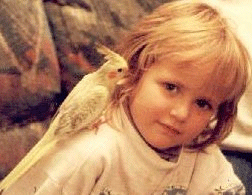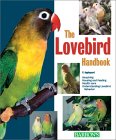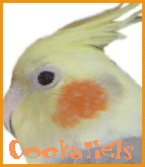Cockatiels
Origin: Australia
Species: Nymphicus hollandicus
Cockatiels are relatively small parrots that make excellent pets. Cockatiels are second only to parakeets in terms of pet popularity. They come in a variety of color mutations, some rarer than others. The price can vary greatly depending on how desirable a certain color mutation is and its current availability.
It is best to get a young bird that is handfed. If parent-raised, it should have been handled regularly and be quite tame already.
Cockatiels are very affectionate birds that will often learn tricks to delight their owners. They can mimic speech and sounds, but their voice is very high-pitched so it can be hard to hear the words. However, their whistling ability is well known, and many tiels can be taught whole songs with practice. Their gentle, sweet nature makes them ideal birds for young children (although generally pet birds are not a good idea for children under age 6 in most cases).

Cockatiels have a sweet disposition that makes them an ideal choice in homes with children. Photo of Christine & Hannah by Jim Hansen
Cockatiels have a powder on their feathers which they use to clean themselves. This powder can be a problem for very allergic persons. It also tends to leave a coating on things around the cage. In most cases it is not a problem, but if you are a neat freak or highly allergic, this bird might not be the best choice.
Their lifespan is 15-20 years, but I have heard of cockatiels living much longer than this. A healthy diet and adequate exercise can extend their lives quite a bit. Get them a cage large enough to flap the wings and play.
One issue with some cockatiels is night frights. This is when they are startled in the dark at night and they thrash about the cage, sometimes injuring themselves seriously. Some people suggest a nightlight near the cage so the bird can get its bearings, thus reducing the panic that leads to more thrashing.
Males have slightly brighter plumage and get more yellow around the face and crest (I’m referring to the normal wild-colored cockatiel here). However, it can be hard to determine sex in very young birds. Both sexes make good pets, although it is recommended that you not put mirrors in the cages of male cockatiels as they will strut about to show off and can become aggressive to protect this “mate.”
Caging: Cockatiels are very playful. They should be given as large a cage as possible. Make sure the spacing between bars is no greater than 3/4″ and make sure there are plenty of horizontal bars to facilitate climbing. Add swings and toys to keep your bird amused and content. Make sure your bird has adequate room for play and exercise.
Diet: Cockatiel seed mix, cockatiel or parakeet sized pellets (mini or small), fresh vegetables, fruit, sprouts and whole grains. A varied diet is best. Cuttlebone for calcium.
Health: Cockatiels are very robust birds. Like most parrots, they should not be put near drafts (avoid putting the cage near a drafty window, especially at night). They can develop fatty tumors so avoid high-fat diet (no seed-exclusive diets). Do not put the cage near a window where headlights might flash at night to prevent startling the bird, which can cause night frights.
Noise: Distinctive sound is not at all offensive. Very pleasant chirping. Whistles easily, so if you don’t want the bird to whistle, don’t whistle to it as it will learn quickly.
Sleep: Cockatiels should get a good night’s sleep with atleast 10 hours of darkness and quiet. Some people recommend a night light near the cage to help with night frights.
Sexual behavior: Males will strut and show off. Avoid mirrors. Hens generally don’t become aggressive, but don’t encourage egg laying by giving any nesting material or sleeping huts.
Breeding: Cockatiels are extremely prolific breeders and generally make excellent parents. Hand-feeding can be difficult for beginners as these birds are prone to sour crop. Many breeders have gotten away from commercial formulas due to their belief it is the high protein content in these formulas that causes sour crop.










